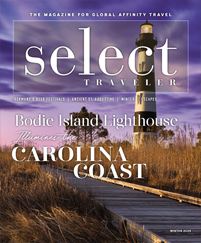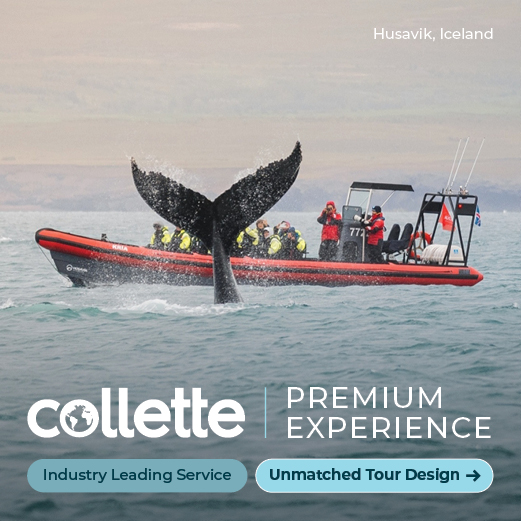A beach town is a beach town is a beach town. Surf, sand, fried seafood and perhaps some sunburn for good measure. That’s plenty, right?
Definitely not when thinking of Virginia Beach, Virginia. The state’s most populous city, with 450,000 or so, boasts a community with enough diversions and activities to warrant repeat visits.
You can even get a perspective on the beachfront, urban and rural components of this multifaceted city from a 1941 open-cockpit Stearman biplane. Virginia Beach spreads out across almost 500 square miles and has 126 farms whose products show up at an excellent farmers market, where your group can enjoy a Virginia ham biscuit, freshly churned ice cream and homemade candy.
“It surprises people how diverse Virginia Beach is,” said Jim Coggin, tourism sales manager for the Virginia Beach Convention and Visitors Bureau. “They know about our beautiful three-mile-long beachfront, but they don’t necessarily know about our history, our eco-activities or our culinary offerings.”
Back in History
One marker on the city’s timeline came in 1607. That April, a group of European settlers made landfall at what is now First Landing State Park on Cape Henry, which they named for the Prince of Wales. They soon moved west and established Jamestown, the first permanent English settlement in the Americas.
The history lesson continues nearby at the Cape Henry Lighthouse, America’s first federally funded public works project. The lighthouse, built in 1792 with Aquia Creek sandstone from the same quarry that helped build the White House and the U.S. Capitol, was authorized by George Washington and overseen by Alexander Hamilton. The 90-foot tower operated for more than a century, and you can climb to the top. A much taller black-and-white lighthouse a short distance away is not open for climbing.
“From the top of the older tower, you can see where the Atlantic Ocean and the Chesapeake Bay come together, and on a clear day, you can see the Chesapeake Bay Bridge-Tunnel,” Coggin said.
In the Air
Jump ahead more than 100 years to find one of Virginia Beach’s surprises, the Military Aviation Museum and its fleet of aircraft from World War I and World War II, one of the largest private collections of its type in the world. There are numerous ways to appreciate these historic aircraft, most of which are airworthy.
More than 65 airplanes are displayed in five hangars. Among them are a Curtiss P-40 — of Flying Tiger fame — a P-51 Mustang, a B-25 bomber, a PBY Catalina flying boat, a Curtiss Jenny, a Sopwith Strutter and even a bright red Fokker DR1 triplane of the type the Red Baron flew in World War I.
Groups can arrange for a boxed lunch served amid the aircraft and visit with pilots and mechanics and even a Rosie the Riveter character to learn the airplanes’ stories. Among the museum’s facilities are the Goxhill Tower — a relocated World War II British control tower — and a reconstructed Luftwaffe hangar.
“Some groups enjoy arranging a flight for two in a Stearman biplane or a replica 1931 WACO biplane,” said Mitchell Welch, director of operations. “The group will have a contest or a drawing to determine who gets to fly. On the ground or in the air, we offer an unusual taste of Virginia Beach very close to the beachfront.”
Welch describes three major airshows each year where groups are welcome. A May event focuses on World War II planes; a Father’s Day event includes a symphony orchestra’s performance; and an October event with the novel name of Biplanes and Brews highlights a 1918 Curtiss Jenny, a 1917 Thomas Moore Scout and Virginia craft beer.
On Dry Land
A landside activity is near the Military Aviation Museum when you continue exploring this natural corner of Virginia Beach. It is the one-two punch of the Back Bay National Wildlife Refuge and False Cape State Park that together offer almost 14,000 acres of pure nature.
One way to explore is a Blue Goose Tram tour: Groups of up to 27 can book a trip that starts in the wildlife refuge, goes to the state park’s visitor center and continues to the Wash Woods historic site. Shallow waters at False Cape often fooled ship captains in the 1800s when False Cape was mistaken for Cape Henry, causing many shipwrecks. A long-lasting community of survivors grew over time, and their story is told at Wash Woods.
The refuge and park offer easy trails, boardwalks, beach access and opportunities to see terrestrial wildlife such as deer, raccoons, otters and many species of birds. There are egrets, herons and migrating waterfowl such as tundra swans in the wetlands; hawks, songbirds and even eagles in maritime forests; and shorebirds aplenty along the beach. Amazingly, you can see high-rise hotels in the distance from some perspectives.
On the Water
Looking across the water, there’s always a desire to get on it, and the Virginia Aquarium and Marine Science Center addresses just that with dolphin- and whale-watching trips aboard the Atlantic Explorer.
“Virginia Beach has a significant dolphin nursery, so we see dolphins almost all year,” said Matt Klepeisz, the aquarium’s public relations manager. “Being near them, watching newborns and seeing them interact is an experience difficult to describe. Observing from a boat is very different from seeing them from the beach.”
The 90-minute trips are great for groups. The boat goes by the Cape Henry Lighthouse and offers a good view of the beachfront. It’s a special treat when you can see the city on one side of the boat and a humpback, minke or fin whale on the other. Whale sightings usually are from December through early March.
On land, the aquarium displays thousands of animals representing hundreds of species, even exotics such as komodo dragons and Malaysian crocodiles. However, learning about what’s right offshore can be even more intriguing. One major display focuses on the Norfolk Canyon, one of 13 major canyons on the Eastern Seaboard, where the ocean bottom descends to more than 5,000 feet.
Among the aquarium’s 2021 expectations is completing restoration of a multiuse building that will include an otter exhibit and a substantial exhibit of jellies. Aquarium staffers are propagating various species of jellies to relocate to their new home. Pure trivia: All jellyfish are jellies, but not all jellies are jellyfish.
At the Table
Jellyfish aside, seafood is the order of the day in Virginia Beach. Two waterside restaurants for groups to consider are Rockafeller’s — yes, spinach makes oysters Rockafeller a vegetable serving — and Waterman’s Surfside Grille, where a notable item is crabby fries — French-fried potatoes that are covered in crabmeat from Maryland’s Eastern Shore and cheddar jack cheese and then broiled.
On the libation front, an Orange Crush is the city’s signature cocktail, and Waterman’s is ground zero for this 16-ounce concoction of fresh orange juice, orange-infused vodka, triple sec and Sprite. Waterman’s bartenders serve almost a half-million Orange Crushes a year.









